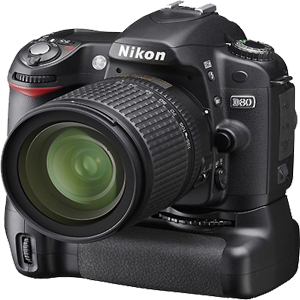Let's continue our exploration of the Photoshop workspace. There are four main counterparts to the Photoshop workspace: the menu bar, the status bar, the toolbox, and the palettes. We looked at the menu bars in the first section. In this lesson we'll be learning about the status bar.
| ||
| ||
The contents of the Graphics Software site are copyright © Sue Chastain and About.com. These pages may be printed for personal reference, but they may not be distributed or republished for any purpose without prior written permission. Please see the About.com User Agreement for more information.
The Status Bar

Now take a look at the status bar along the bottom edge of the Photoshop workspace. The status bar is often taken for granted or overlooked entirely, but it can be a valuable tool. You'll need an open document before the status bar will display any information, so let's open one now.
Now take a look at the status bar along the bottom edge of the Photoshop workspace. The status bar is often taken for granted or overlooked entirely, but it can be a valuable tool. You'll need an open document before the status bar will display any information, so let's open one now.
Go to the File menu and choose Open, locate an image file and open it now. If you don't have an image file handy, you can find several in the Stockart folder of the Photoshop application CD. Ctrl-O/Cmd-O is the keyboard shortcut to open a file. This is the same shortcut used by most applications, so it should be an easy one to remember. If you are a Windows user, you can quickly open a file by double clicking on the application background. (Since there is no application background on the Mac OS, there is not a Macintosh equivalent to this shortcut.)
Ads
Google Business Emailwww.google.com/appsGet Gmail at your own .com address & search a 25 GB quota. Learn more.
Free Photo Editing Downloadwww.myimageconverter.comConvert Between Various Image Files Browse & Edit Images w/ Free App!
Next in the status bar, you can see useful information about the tool you have selected. If you still have the zoom tool selected, your status bar should say "Zoom In" if you are outside of the document area. Move the cursor into the document area and you will see the status bar display instructions for using that tool. Now hold down the Alt/Option key and the status bar will show "Zoom Out" and the cursor will change to a minus sign. Next try the Ctrl/Commandkey in conjunction with the zoom tool and observe the tips displayed in the status bar. Try the other key combinations such as Ctrl-Shift/Cmd-Shift, or Ctrl-Alt/Cmd-Option while observing the status bar instructions.
Let's review each of the zoom tool options:
No modifier key = click to zoom in; click and drag to zoom into a specific area
Double click = zoom to 100% magnification
Ctrl-Alt-0/Cmd-Option-0 = zoom to 100% magnification
Alt/Option = click to zoom out
Ctrl/Cmd = temporarily toggles to the move tool
No modifier key = click to zoom in; click and drag to zoom into a specific area
Double click = zoom to 100% magnification
Ctrl-Alt-0/Cmd-Option-0 = zoom to 100% magnification
Alt/Option = click to zoom out
Ctrl/Cmd = temporarily toggles to the move tool
Here are a few more zoom shortcuts we have not yet covered:
Double click the Hand tool = zoom to fit the screen
Hand tool = zoom to fit the screen
Ctrl-0/Cmd-0 = zoom to fit the screen
Ctrl- /Cmd- (plus sign) = zoom in
Ctrl--/Cmd-- (minus sign) = zoom out
Double click the
Ctrl-0/Cmd-0 = zoom to fit the screen
Ctrl- /Cmd- (plus sign) = zoom in
Ctrl--/Cmd-- (minus sign) = zoom out





0 comments:
Post a Comment